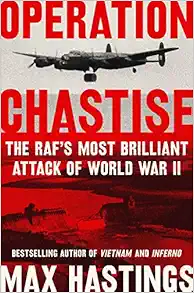
Das Reich: March of the Second Ss Panzer Division Through France
Hardcover – April 1, 1982
Description
I was inspired to buy this book after having read Martin Walker's Caves of Perigord for the second time. I just found I needed to know more about WW2 in France. I was not disappointed, though the book is more about the French than about the German panzer's history. --By Johan Fredrik Fjeldstad (Oslo, Norway)Extremely detailed and well researched, the book provides a fascinating insight into the events of the period, overturning many 'cherished' beliefs. Balanced, with input from both sides of the conflict, it provides a thorough understanding of all of the issues involved, including the 'bigger' picture often overlooked. Particularly interesting for me as someone living in this area, surrounded still by evidence and residual feelings of the campaign. --Mike France (SW France)Das Reich is a look at wartime France, the SS, and the horror and cruelty of war. It is a consideration of the French resistance, supported by the British and Americans, and the role they played in disrupting and slowing the 2nd SS Panzer Division Das Reich in its journey from Toulouse to the bocage of Normandy. A journey that should have taken only a few days instead took over 15, due to the efforts of the resistance and of Allied air cover. That this journey was slowed is not vital to the outcome of WWII, but it did have a significant impact on the second battle of France. One of the things that Das Reich makes clear is the fractured and fragmented nature of the French resistance - some little better than criminals, some communists seeking political power, and many simply young men who thought running off to the forests was a better option than being forcibly shipped to Germany to work in German factories. Most Frenchmen seemed not to mind working for the Germans, so long as it was in France, but being sent to Germany was a different matter altogether. It is also clear that being anti- a particular resistance group - especially the more political ones - was not the same as being pro-German. Basically, France was a horrible place to live in 1944, although probably better than being in Russia in 1941. Of course, the Das Reich division was in Russia at that time, fighting a brutal war on the Eastern Front. In early 1944 it was moved to southern France to reform and rearm. Hastings points out why the SS were as fiercely loyal to Hitler as they were: generally, they were working class men who would not be fully accepted in the blue blooded Wehrmacht. They Nazi party gave them a chance, and they took it and gave unfailing loyalty in return. The author seeks to be as evenhanded as it possible to be when discussing war crimes, and it is pretty clear that those occurred on both sides during the events covered Das Reich. It is spelled out repeatedly that simply shooting a maquis resistance member was not a war crime, as they were not in uniform and not covered by the Geneva convention. The problem was, in Tulle 99 men were hanged from lampposts on mere suspician, and that in Oradour-sur-Glane 642 men, women and children were brutally murdered, shot and burned to death. These acts were horrific and can never be excused or explained. The role of the Allied forces in guiding the resistance is discussed - the liaison officers and spies, from Violette Szabo to radio operators in the UK. Hastings finishes the book with a chilling quote from a former SS officer, to the effect of "compared to the Eastern Front, the massacres were nothing". This book is an excellent companion to any WWII history of D-day and the liberation of France. It serves to bring out the true horror of war, which is that real evil lurks in the hearts of men. --By John Middleton (Brisbane, QLD, AUST) Sir Max Hastings is the author of twenty-five books, many of them about war. He was educated at Charterhouse and University College, Oxford, which he quit after a year to become a journalist. Thereafter he reported for newspapers and BBC TV from sixty-four countries and eleven conflicts, notably the 1973 Arab-Israeli War, Vietnam and the 1982 Battle for the Falklands. Between 1986 and 2002 he was editor-in-chief of The Daily Telegraph, then editor of the Evening Standard. He has won many prizes both for journalism and for his books, most recently the 2012 Chicago Pritzker Library's $100,000 literary award for his contribution to military history, and the RUSI's Westminster Medal for his international best-seller 'All Hell Let Loose'.
Features & Highlights
- Within days of the D-Day lanings, the 'Das Reich' 2nd SS Panzer Division marched north through France to reinforce the front-line defenders of Hitler's Fortress Europe. Veterans of the bloodiest fighting of the Russion Front, 15,000 men with their tanks and artillery, they were hounded for every mile of their march by saboteurs of the Resistance and agents of the Allied Special Forces. Along their route they took reporisals so savage they will live for ever in the chronicles of the most appalling atrocities of war. Max Hasting's powerful account of their progress is a true military classic.





